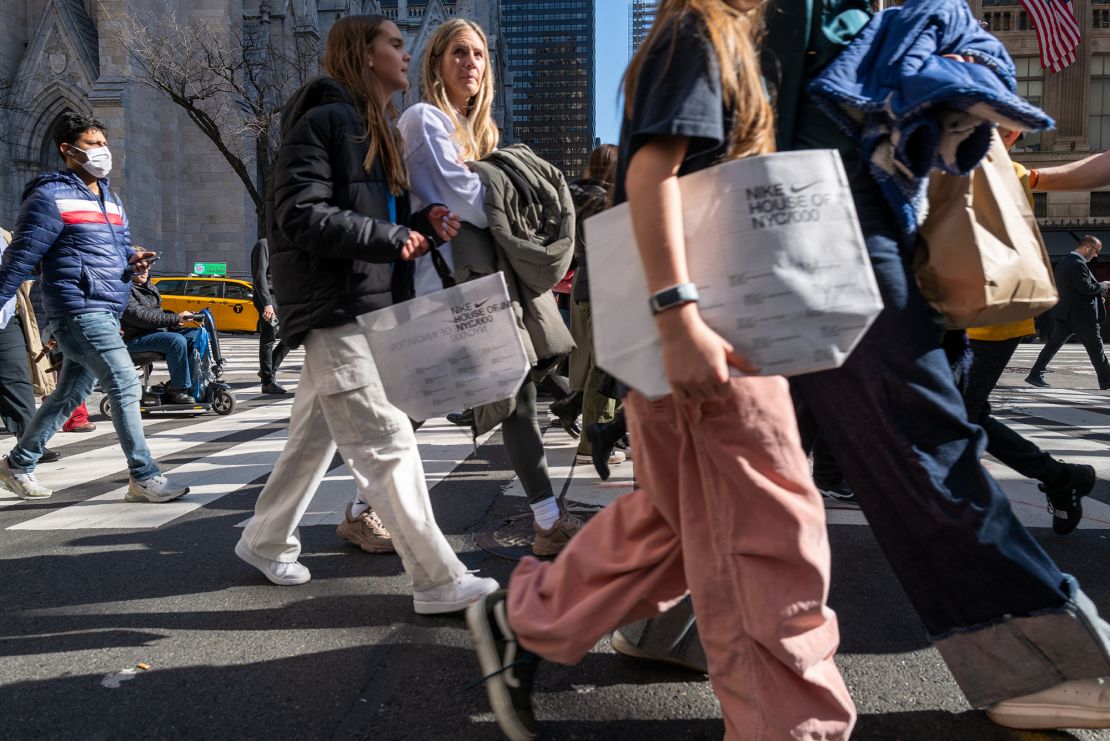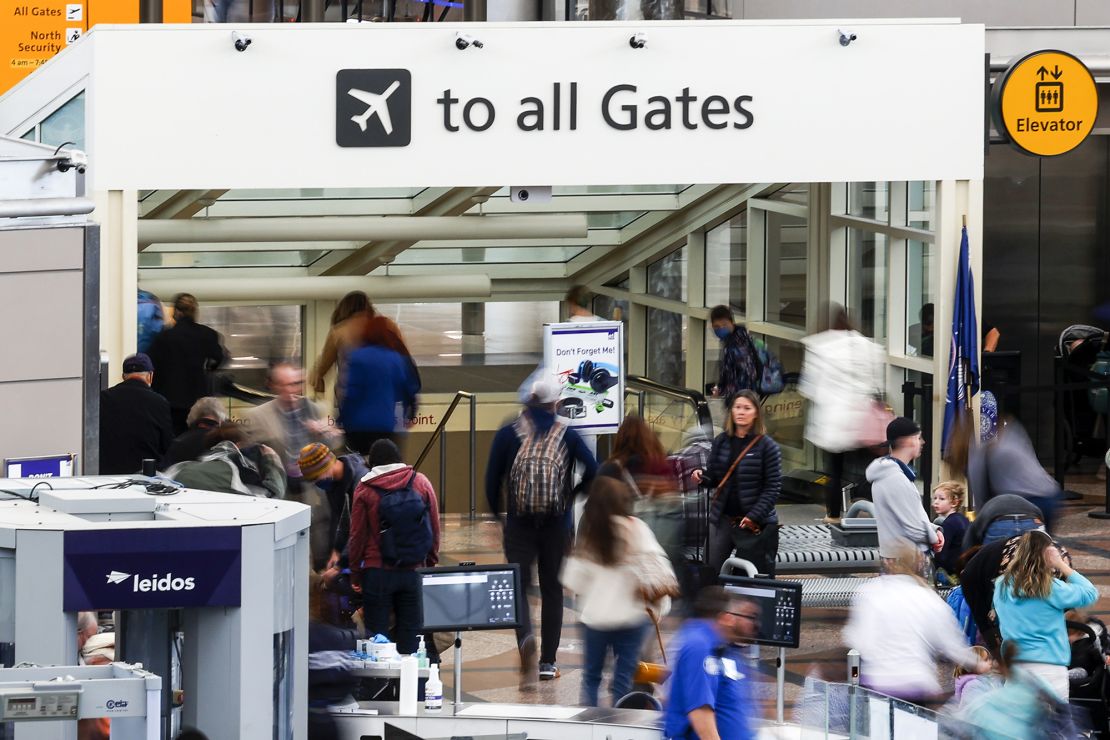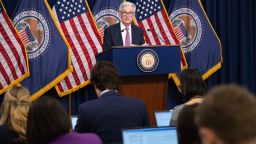US consumers kept spending last year despite historically high inflation, not only shelling out for necessities but also splurging on restaurants, travel and other experiences impeded by the pandemic.
Economists had predicted spending would peter out as the months drew on, as savings diminished, high prices persisted, and the Federal Reserve ratcheted up efforts to squeeze demand. And by November and December, those predictions appeared to be materializing, when data showed consumers had pulled back during the holiday shopping season.
Then came January.
During a month chock full of suprisingly strong economic data, the Commerce Department’s retail sales and consumer spending reports far surpassed expectations. It appeared that consumers weren’t just resilient, they were practically resurgent.

“If they have money, they’ve shown us they’re going to spend it,” said Shannon Seery, vice president and economist for Wells Fargo’s corporate and investment bank. “I think what’s really going to take the consumer to turn would be a deterioration in the labor market.”
But like most things during these wonky economic times, the apparent January spending jump isn’t as simple as it seems.
Seery and others caution that the early 2023 surge may be attributable to seasonality quirks or, even more likely, a temporary recovery to belt-tightening at the tail end of last year.
If anything, they say, strong spending activity is likely on borrowed time as safety nets are fraying and negative external factors are accumulating.
“I think it’s more likely that we’ll see a return to some weaker data, some softer spending, some softer demand, because it’s hard to see that resulting in a full turnaround, given how much savings have already been worn down and credit utilization has climbed up,” said Kayla Bruun, economic analyst at decision intelligence company Morning Consult. “It’s not sustainable to keep spending above their means.”
Eyes on the Fed
Hearty consumer spending at a time like this is a double-edged sword, said Ted Rossman, senior industry analyst for Bankrate and CreditCards.com.
“The resilience of consumer spending is probably the biggest thing that’s pushed this recession timetable out,” Rossman said. “In some respects, this is actually good for the economy because people are spending. But what we worry about at the household level is, are they going to spend too much and get into trouble?”
While day-to-day expenses — and the sheer influence of inflation — are driving a lot of these numbers, discretionary spending is also staying steady to some extent, he said.
“Higher prices are juicing some of these stats,” he told CNN. “Then again, there is a lot of demand, the job market is strong. I feel like consumer spending has been more robust than a lot of us predicted.”
And if this were to continue, it could certainly affect the game plan for the Fed, which has recently issued more modest rate hikes to assess the impact of its previous string of heavier-handed increases.
“Six months ago, I would have said that, yes, if [consumers] continue to spend, the Fed is going to have to go higher, they’re going to have to stay there longer, and they’re going to cause a more severe recession,” Wells Fargo’s Seery said. “Part of me is thinking that is still potentially the case; but in some ways, this also makes the Fed’s job a bit easier if consumers are able to withstand the higher rates and the labor market doesn’t deteriorate as much.”
She added: “The Fed might not necessarily have to go higher [than currently projected], but they probably are going to be on hold for longer.”
Wells Fargo’s current base case scenario calls for the Fed doling out quarter-point hikes at both its March and May meetings and then pausing.
It’s also important to note, Seery said, that the full brunt of the Fed’s moves in 2022 have yet to be felt.
“The tightest point of Fed policy is probably going to be four to six months after the last hike, which is is conjunction with our overall recession calls,” Seery and fellow Wells Fargo economist Tim Quinlan wrote in a February 24 note.
The pandemic effect
The pandemic does appear to have left an imprint on how consumers are behaving, said Cait Lamberton, professor of marketing at the University of Pennsylvania’s Wharton School.
There’s more “transformational spending” to reflect new chapters people believe they’re starting in addition to a greater focus on making up for lost time and experiences due to the pandemic, she said.

“I think there’s a tendency to say that consumers are just wasting money and complaining about prices, and I think that’s not the best way to think about it,” she said. “I think that during the hardest portions of the pandemic, people realized what was important to them.”
She added: “It’s not a bad idea to spend more on things that matter; it’s not a good idea to spend money on things that don’t matter.”
To some extent, consumers already are exhibiting some recessionary shopping behaviors at the grocery store, said Carman Allison, vice president of thought leadership for North America at consumer research firm NielsenIQ.
Retailers are already bracing for a bumpy year ahead. Just the other week, Walmart issued a more cautious economic outlook, anticipating its core, lower-income customers will be squeezed further by inflation. The Home Depot (HD) warned of flat sales for 2023 as consumers continue shift spending from goods to services.
“The consumer is still very pressured,” Walmart CFO John Rainey told CNBC this week. “And if you look at economic indicators, balance sheets are running thinner and savings rates are declining relative to previous periods. And so that’s why we take a pretty cautious outlook on the rest of the year.”
Because of the persistently high inflation for food items and consumer packaged goods, Americans are spending more and consuming less, Allison said. In the fourth quarter of 2022, 32% of shoppers surveyed said they were buying less or restricting purchases to essentials, Allison said.
“Right now, we have a consumer that is more loyal to their wallet than they are to brands and retailers,” he said.
Potential shoes that can drop
There are cracks spreading in the foundation. US household debt hit a record $16.9 trillion last quarter, and credit card balances increased nearly 6.6% — the highest quarterly growth since the Federal Reserve Bank of New York started tracking that data in 1999.
New survey data from Bankrate shows that consumers’ coffers are running dry: 49% of adults surveyed said they have either a lower amount of emergency savings or none at all, compared to a year ago.
Additionally, 36% of respondents said their credit card debt outweighed emergency savings (a record high in 12 years of polling).
“In a perfect world, we’d have higher levels of emergency savings more broadly distributed across groups of individuals,” said Mark Hamrick, senior economic analyst at Bankrate. “But we don’t live in that perfect world.”
And there’s growing concern that situations could quickly worsen if and when pandemic-era relief programs and payments moratoria are ended.
The ending of the current federal student loan payment forbearance could not only cause education loan delinquencies to rise but also spill over to credit card and auto loans as well, New York Fed researchers noted.
The cost of credit card interest is the highest seen since Bankrate started conducting its surveys on that topic; but on the flip side, savings yields are hitting historic highs, Hamrick said.
However, “It’s not whether unexpected events are going to occur, it’s only what they look like when they do rear their ugly heads,” he cautioned.









